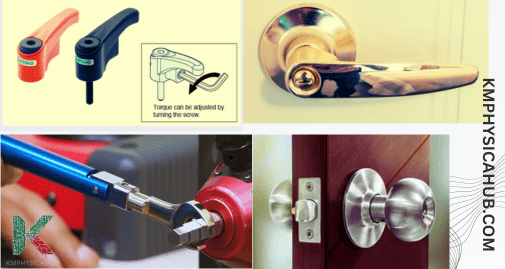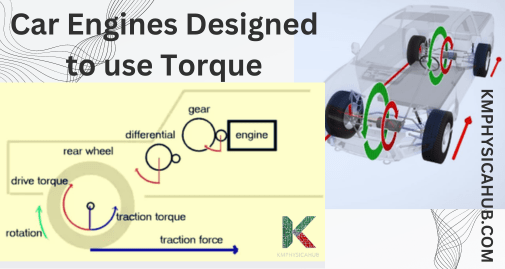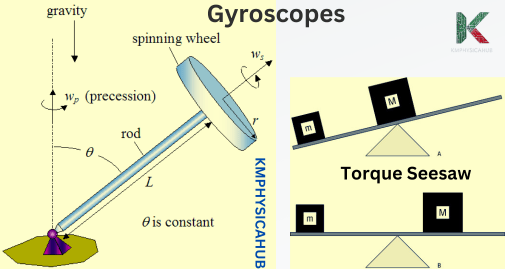The Turning Force: How Torque Impacts our Daily Lives
We often think of force as a simple push or pull. But what happens when that force makes something rotate? It is the realm of torque! It’s the invisible hand behind countless everyday actions, from opening a stubborn jar to driving a car. Even the delicate turning of a page in a book relies on the principles of torque!
Understanding Torque:
Just consider the example of an attempt to unscrew a bolt that has been exposed to the air and has rusted. You pull and shove with all the strength you’ve got and there is no way you can shift it. Then, you grab a wrench—a longer one, of course, because you are smart—and it immediately twists with the ease!
Definition of Torque
Torque as defined is quite simply a force the results in rotational motion. Of course, it is not only about the sheer force that is used but also about where and how this force is used.
Key Concepts
Force (F): The amount of force exerted either as a push or a pull force in Newtons (N)
Lever Arm (r): This is the distance of the force from the axis of rotation or the vertical distance from the pivot point or fulcrum. It’s similar to the size of the wrench you are holding in your hand.
The Relationship: Torque is equal to force multiplying the lever arm or τ = F * r which simply explains that if you did use that longer wrench then more torque is obtainable due to the increased lever arm length.
Units of Measurement: Torque is expressed in Newton meters or in other words, the rotational force is expressed in Nm. One Nm is equal to the torque exerted by one Newton force acting perpendicular to a lever arm of one meter in length.
Torque in Everyday Life: A World of Rotation
Torque is the silent operator behind countless everyday objects and actions:
Simple Machines:
Our ancestors harnessed torque to build amazing things long before they understood the physics behind it!
Levers: From bolt-removing tools to car jacks, levers apply torque to a force. Large weights positioned on the short arm of a lever can be lifted by tiny forces on the other arm of the lever.
Wrenches: For instance, in our rusty bolt example, wrenches offer the necessary force that generates adequate torque for loosening or tightening nuts and bolts.
Doorknobs: Door knob is in fact a round bar or circular shaped handle. The farther the knob is from the hinge, the easier to turn the knob and open a door because the force is said to be applied to a longer lever arm.

Vehicles:
Torque is the driving force behind our vehicles:
Engines: Forces applied by automobile and bicycle engines are designed to produce torque that spins the wheels. Opting for more torque is desirable for an enhanced capacity to accelerate, and get over hills.
Steering Wheels: A spin of the steering wheel results in action of forces on the steering column and in turn the wheels of the car. Having a big wheel means getting better leverage since turning a large wheel is not a daunting task.

Tools and Appliances:
Torque is everywhere in our homes:
Screwdrivers: The twisting force you apply with a screwdriver is torque!
Gears in Clocks: Clocks use a series of gears, each applying torque to the next, to precisely measure time.
Salad Spinners: Even a simple salad spinner uses torque! Turning the crank generates torque, causing the basket to spin rapidly and fling the water off the lettuce.
From the simplest tools to the most complex machines, torque is an essential principle that shapes our world. So the next time you open a jar, ride a bike, or simply turn a page, take a moment to appreciate the silent power of torque at work!
Torque and the Human Body
Our bodies are not just fleshy sacks of potatoes; they are intricate systems of levers and motors, with torque playing a starring role in every move we make!
Muscles and Joints: Imagine you are holding a thick and heavy book. The elbow joint is the fulcrum and your biceps muscle pulls on your forearm (the lever) applying a force. This produces torque, making your forearm revolve in the clockwise direction and lifting the book up! Every movement starting from walking and writing is a miracle of generating and controlling torque in our body.

Sports Applications: It is quite astonishing to consider that athletes are in fact masters of torque and effectively apply it to accomplish the most marvelous of stunts.
- Running: Each time the leg moves forward, leg muscles twist around the hip and knee joints, creating force in the direction of running. There is no doubt that the increase in torque power will also lead to a stronger stride.
- Throwing: A baseball pitcher acts through a choreography of torques in his legs, torso and arm in order to get the ball as fast as possible. The force required to spin or rotate the ball is termed as ‘torque’ that controls the type of spin as well as the height of the ball.
- Swimming: Swimmers swim by exerting pulls and kicks exerting a torque with limbs acting like the levers on the body in the water.
Torque in Homes and Household Appliances
Here are some more examples of household activities that involve torque.
Kitchen:
Using a Can Opener: Whether manual or electric, can openers use torque. You apply force to a handle (lever) creating torque that cuts through the can’s lid.
Grinding Pepper: Rotating the top of a pepper grinder creates torque that powers the grinding mechanism.
Wringing Out Laundry: Twisting a wet cloth generates torque, forcing out the water.
Using a Nutcracker: The hinge of a nutcracker acts as the pivot point. Applying force on the handles creates torque, cracking the nut.
Bathroom:
Turning on a Faucet: Like many other taps, some amount of torque is needed to turn the handles or knobs of a faucet.
Using a Toilet Paper Holder: Certain toilet paper holders come with springs and they use torque while dispensing the paper.
Squeezing Toothpaste: Though this step is rather small, it entails turning a tube of paste to push it out through rotation.
Other Areas:
Operating Blinds or Curtains: Turning the string around the wrapped screw, twisting the handle in order to make the blinds/curtains open or close is an example of torque.
Using a Stapler: Stapling entails the use of force which is achieved by twisting in order to place the staple through the paper and have it clinched.
Tightening Jar Lid: Pressure is applied on the lid and creates an attempt to turn the lid where torque overcomes the seal.
Using a Hand Mixer: In a hand mixer, the motor is used to create torque to rotate the beaters.
These examples demonstrate that even simple actions in our homes often rely on the principle of torque. We may not always realize it, but this rotational force is essential for many everyday tasks.
Interesting Applications of Torque: From Gyroscopes to Playgrounds
Torque plays such an enormous role in our daily interactions which are probably hard to comprehend.
Gyroscopes: These peculiar gadgets appear to float or fly in a suspension state, nevertheless, the physics behind it is grounded on the principle of conservation of angular momentum which is related to torque. A spinning gyroscope opposes any change of the spin axis, and is therefore an ideal system for navigation (compasses, autopilots), and even stabilizers (ships, satellites, aircrafts). Indeed, it is true that there is some magical quality which ensures a spinning top remains upright as there is to ensure a giant ship remains steady on the high seas!
Power Drills and Impact Wrenches: These tools are really force multipliers and are typically developed for handling extremely challenging jobs. Power drill is designed to deliver high torque at low speeds by using an electric motor so that it is suitable for boring on hard materials. An impact wrench goes a notch higher by having a hammering system that will regularly provide very high torque in short periods only, making it very useful in cases where there is need to unscrew hardest of bolts.
Seesaws and Playgrounds: Even our childhood playgrounds are not immune to the laws of physics! A seesaw is a classic example of torque in action. Two children of different weights can stand on a seesaw equally well if the distance from the balance point or the pivot is varied in such a way that there is an equal and opposite turning effect.

Conclusion:
Probably, starting from the deepest parts of our bodies and up to the greatest machines in the world, torque remains as one of the key principle elements in everyday life. It is the unseen copilot of many historical advancements, allowing us to move, sprint, construct, and adventure.
Torque is a significant part of infinite daily moments starting from the vehicles that we use to the doors that we open. That is why the understanding of its principles helps to better assess and effectively use different tools and mechanisms in a daily life. The practical applications of torque underscore its significance in enhancing our daily experiences and technological advancements.
FAQs
Q1. What is torque, in simple terms?
A: Torque is basically a twisting force that makes things rotate or turn. Think of it as the “twist” you apply when opening a jar!
Formula: τ = r * F
Q2. How can I increase the torque applied by a tool?
A: To increase the torque more force can be applied or the distance of the lever arm can also be increased. For example, using the extended wrench you can get more torque out of the same amount of force than when using the short wrench.
Q3. Why is torque important in electric vehicles (EVs)?
A: Torque plays an important role in EVs since torque affects the acceleration and load-carrying capacity of a vehicle. Electric motors offer a large amount of torque at initial startup and provide rapid acceleration and comfortable riding, even without gears.
Q4. Can torque be negative?
A: Yes, torque can be negative, which implies the direction of the rotational force is opposite to the positive direction. The sign of torque depends on the chosen convention for positive and negative directions.
Q5. What’s the difference between torque and force?
A: Force is a push or pull. It can make things move in a straight line.
Torque makes things rotate around an axis. Think spinning!